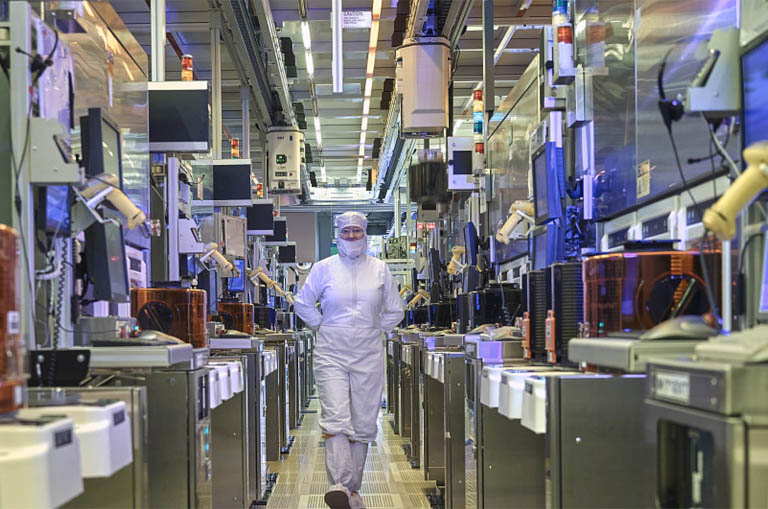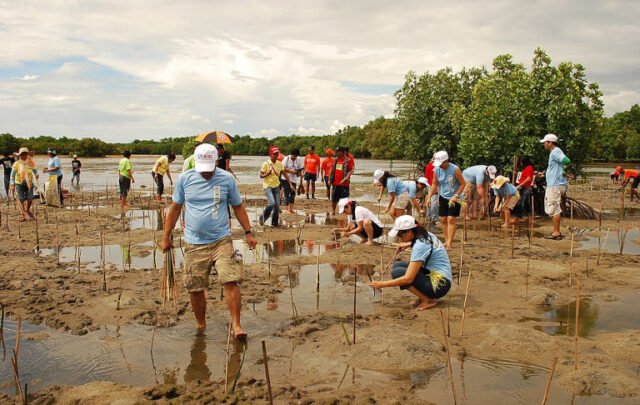This year may or may not be the year the latest wave of AI-hype crests and subsides. But let’s hope this is the year mass media slow their feverish speculation about the future dangers of Artificial Intelligence, and focus instead on the clear and present, right-now dangers of the Artificial Intelligence Industrial Complex.
Lost in most sensational stories about Artificial Intelligence is that AI does not and can not exist on its own, any more than other minds, including human minds, can exist independent of bodies. These bodies have evolved through billions of years of coping with physical needs, and intelligence is linked to and inescapably shaped by these physical realities.
What we call Artificial Intelligence is likewise shaped by physical realities. Computing infrastructure necessarily reflects the properties of physical materials that are available to be formed into computing machines. The infrastructure is shaped by the types of energy and the amounts of energy that can be devoted to building and running the computing machines. The tasks assigned to AI reflect those aspects of physical realities that we can measure and abstract into “data” with current tools. Last but certainly not least, AI is shaped by the needs and desires of all the human bodies and minds that make up the Artificial Intelligence Industrial Complex.
As Kate Crawford wrote in Atlas of AI,
“AI can seem like a spectral force — as disembodied computation — but these systems are anything but abstract. They are physical infrastructures that are reshaping the Earth, while simultaneously shifting how the world is seen and understood.”1
The metaphors we use for high-tech phenomena influence how we think of these phenomena. Take, for example, “the Cloud”. When we store a photo “in the Cloud” we imagine that photo as floating around the ether, simultaneously everywhere and nowhere, unconnected to earth-bound reality.
But as Steven Gonzalez Monserrate reminded us, “The Cloud is Material”. The Cloud is tens of thousands of kilometers of data cables, tens of thousands of server CPUs in server farms, hydroelectric and wind-turbine and coal-fired and nuclear generating stations, satellites, cell-phone towers, hundreds of millions of desktop computers and smartphones, plus all the people working to make and maintain the machinery: “the Cloud is not only material, but is also an ecological force.”2
It is possible to imagine “the Cloud” without an Artificial Intelligence Industrial Complex, but the AIIC, at least in its recent news-making forms, could not exist without the Cloud.
The AIIC relies on the Cloud as a source of massive volumes of data used to train Large Language Models and image recognition models. It relies on the Cloud to sign up thousands of low-paid gig workers for work on crucial tasks in refining those models. It relies on the Cloud to rent out computing power to researchers and to sell AI services. And it relies on the Cloud to funnel profits into the accounts of the small number of huge corporations at the top of the AI pyramid.
So it’s crucial that we reimagine both the Cloud and AI to escape from mythological nebulous abstractions, and come to terms with the physical, energetic, flesh-and-blood realities. In Crawford’s words,
“[W]e need new ways to understand the empires of artificial intelligence. We need a theory of AI that accounts for the states and corporations that drive and dominate it, the extractive mining that leaves an imprint on the planet, the mass capture of data, and the profoundly unequal and increasingly exploitative labor practices that sustain it.”3
Through a series of posts we’ll take a deeper look at key aspects of the Artificial Intelligence Industrial Complex, including:
- the AI industry’s voracious and growing appetite for energy and physical resources;
- the AI industry’s insatiable need for data, the types and sources of data, and the continuing reliance on low-paid workers to make that data useful to corporations;
- the biases that come with the data and with the classification of that data, which both reflect and reinforce current social inequalities;
- AI’s deep roots in corporate efforts to measure, control, and more effectively extract surplus value from human labour;
- the prospect of “superintelligence”, or an AI that is capable of destroying humanity while living on without us;
- the results of AI “falling into the wrong hands” – that is, into the hands of the major corporations that dominate AI, and which, as part of our corporate-driven economy, are driving straight towards the cliff of ecological suicide.
One thing this series will not attempt is providing a definition of “Artificial Intelligence”, because there is no workable single definition. The phrase “artificial intelligence” has come into and out of favour as different approaches prove more or less promising, and many computer scientists in recent decades have preferred to avoid the phrase altogether. Different programming and modeling techniques have shown useful benefits and drawbacks for different purposes, but it remains debatable whether any of these results are indications of intelligence.
Yet “artificial intelligence” keeps its hold on the imaginations of the public, journalists, and venture capitalists. Matteo Pasquinelli cites a popular Twitter quip that sums it up this way:
“When you’re fundraising, it’s Artificial Intelligence. When you’re hiring, it’s Machine Learning. When you’re implementing, it’s logistic regression.”4
Computers, be they boxes on desktops or the phones in pockets, are the most complex of tools to come into common daily use. And the computer network we call the Cloud is the most complex socio-technical system in history. It’s easy to become lost in the detail of any one of a billion parts in that system, but it’s important to also zoom out from time to time to take a global view.
The Artificial Intelligence Industrial Complex sits at the apex of a pyramid of industrial organization. In the next installment we’ll look at the vast and complex physical needs of that complex.
Notes
1 Kate Crawford, Atlas of AI, Yale University Press, 2021.
2 Steven Gonzalez Monserrate, “The Cloud is Material” Environmental Impacts of Computation and Data Storage”, MIT Schwarzman College of Computing, January 2022.
3 Crawford, Atlas of AI, Yale University Press, 2021.
4 Quoted by Mateo Pasquinelli in “How A Machine Learns And Fails – A Grammar Of Error For Artificial Intelligence”, Spheres, November 2019.






